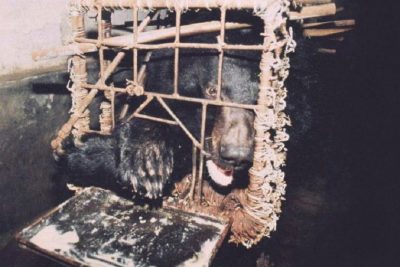Himalayan Monal: The Nine-Coloured Bird of the Himalayas
Share

A male Himalayan Monal. (Ajit Hota / Wikimedia Commons)
The Himalayan Monal, also known as the Impeyan Pheasant or Impeyan Monal, is a variety of pheasant found in the hilly forests of the Himalayan region. The scientific name of the bird is Lophophorus impejanus and it belongs to the Phasianidae family of the Galliformes order.
Ecological state
These birds are endemic to a vast belt including, Bhutan, China, Nepal, Pakistan, India (states of Jammu and Kashmir, Himachal Pradesh, Uttaranchal, Sikkim and Arunachal Pradesh), and even Myanmar. The bird is almost extinct in Afghanistan, and their numbers are steadily reducing in other areas due to various anthropological factors. As a result, they have been included in the IUCN Red List of Threatened Species (2016), albeit as a species of ‘Least Concern’ (LC).
Habitat of Himalayan monal
These pheasants are typically found residing in the oak-conifer forests of cool upper temperate regions, such as the Himalayan hills. Their preferred habitat also features rolling grassy slopes and cliffs, and an extensive understory of bamboo and rhododendron. The Himalayan Monal is a high-altitude bird that practices altitudinal migration as the weather changes. In the winter months they come down to 6,500ft. In the summers they move up to 16,000ft, wandering the grassy slopes above the tree-line. In general they maintain an altitude between 2,000 and 4,500m above the sea level.

Himalayan Monal (Lophophorus impejanus). (Koshy Koshy / Flickr)
Behaviour of the Himalayan monal
The Himalayan Monal spends most of its day foraging for insects, berries, shoots, and seeds. These pheasants have heavy bills which they expertly use for digging out subterranean insects and tubers from the slopes as well. Their tolerance to the snow is an added bonus to their lifestyle. The shrill curlew-like whistle of the Himalayan Monal is quite distinctive. These pheasants usually roam single or in pairs, especially during their breeding season between April and August. At other times they might also be spotted in small groups, or large conveys, while practicing communal roosting.
Description
The Himalayan Monal is one of the most stunning pheasants due to its distinctive iridescent metallic-coloured plumage. An average bird would measure to around 70 cm in length and between 4.4-5.2 lbs in weight, and it is considered to be a somewhat large bird. The average female of the species is a tad smaller and lighter than its male counterpart.
Male Himalayan monal pheasant
The Himalayan Monal is also known as the ‘nine-coloured bird’ owing to the iridescent metallic-coloured plumage on the neck and wings of the adult male bird. With a white back and black underparts, the bird exposes a prominent white patch on its rump when in flight. The tail feathers of the male bird are consistently metallic reddish-brown coloured, ending at a darker shade towards the tips. A distinct blue patch around the eyes characterises the species.
Female Himalayan monal pheasant
Though still quite striking in appearance, the females of the species are less brightly plumed. They have a short crest and a white throat. The feathers on the upper parts of the hens are a dappled brownish-black. The tail feathers have are mix of white feathers and a layer with a black and copper splotched appearance. The females also have the characteristic blue patch around the eyes, as do the males.

An adult female Himalayan Monal. (Koshy Koshy / Flickr)
Immatures
The younger birds, including first year males, resemble the females of the species and are not very prominently coloured. The only way to distinguish an immature male from a hen is its black feathers in the breast and neck. The young males also have a slightly larger build.
Housing
Though a large bird, the Himalayan Monal is quite docile and easily trusting, specifically the females of the species. Owing to this, and their remarkable appearance, these birds are quite common in aviculture. As high altitude birds, these pheasants can survive the harshest of cold weathers. However, they must be adequately protected from warm summer conditions since they cannot tolerate high temperatures. Usually these birds are kept in pairs or trios, in well-drained and large aviaries, ideally of a minimum 112 sq. ft. dimension. A well-drained sandy soil is required due to these birds’ propensity for digging through the grass and other greenery.
Breeding
These pheasants attain sexual maturity around the age of 12 to 24 months, and generally start breeding the second year onward. Their breeding season starts around late-April. The male Himalayan Monals fan their tail feathers, bob the crest, and indulge in various bodily displays to attract the hens. Another notable signal is the males calling out throughout the day instead of just in the early mornings. The male birds get territorial and aggressive during breeding season, despite generally being of a genial nature.

Eggs of Himalayan Monal. (Muséum de Toulouse / Wikipedia Commons)
The birds create simple nests under bushes, or on steep cliffs, and are very attentive as parents. The Himalayan Monal generally lays two to five eggs, white or dirty white in colour with brown splotches. The hens must incubate them for an average of 28 days. The male bird usually guards the nest throughout to protect the eggs and fledglings from vicious predatory birds. The young chicks are completely independent by the time they are six months old.
These birds breed in captivity, as well as in they do in nature. Often the breeders separate the fledglings for rearing by hand, and they must be provided with ample space. Heavily susceptible to disease, the chicks should be kept in well-drained aviaries or wire-bottomed cages to minimize exposure to pathogens.
Trivia
Interestingly, the Himalayan Monal is also known as the Impeyan Pheasant, a name derived from that of Lady Impey- the first to keep these exquisite birds in captivity. The Himalayan Monal is the national bird of Nepal, and the state bird of Uttaranchal and Himachal Pradesh in India. The bird has been an intricate part of the local folklore of these regions. Its feathers even formed a part of their traditional headgear (before the criminalization of poaching). Thus we can see its immense cultural significance in these parts and its need for conservation.
Enjoyed this article? Also, check out “Hoatzin Reptile Bird: A Dinosaur-Like Bird with the Digestive System of a Cow“.
Fact Analysis:
STSTW Media strives to deliver accurate information through careful research. However, things can go wrong. If you find the above article inaccurate or biased, please let us know at [email protected]













